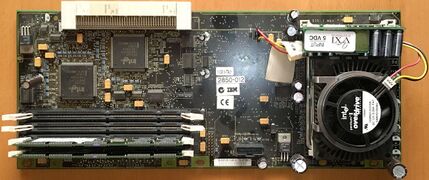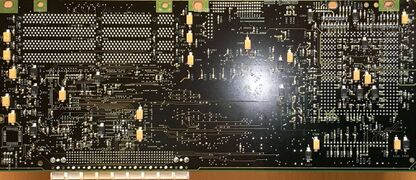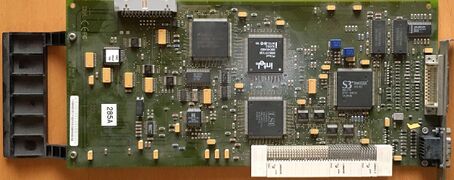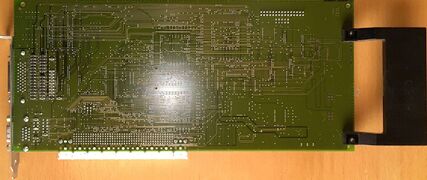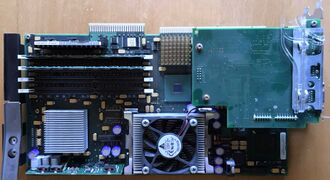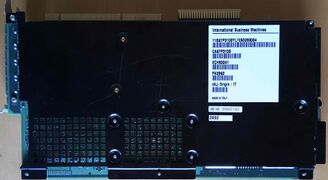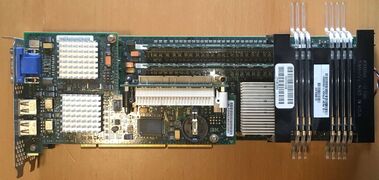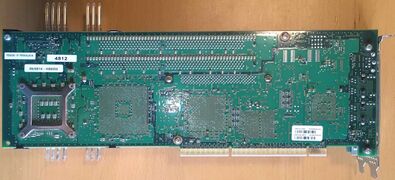The Integrated PC Servers
| This article isn't finished yet or needs to be revised. Please keep in mind that thus it may be incomplete.
Reason: Finish article |
IPCS's are a family of add-on cards for certain AS/400 models. They are known with the following names:
- Integrated PC Server (IPCS)
- File Server I/O-Processor
- Integrated xSeries Server
- Integrated Netfinity Adapter
These were offered as means to integrate PC based operating systems, such as IBM/Microsoft OS/2, Novell Netware, Microsoft Windows (and later, Linux) into the same physical hardware box. The cards came with a dedicated INTeL-CPU and RAM, as well as usual peripheral ports. Optical and tape storage could be shared by either OS/400 or the OS running on the IPCS. Disk storage is virtualised as disk image files in the IFS of OS/400. Depending on model, PCI-slots on the backplane can be used solely by the IPCS, and nothing else.
Through the addition of expansion towers or PCI Cages to the bigger systems, more than just one PCI based IPCS can be managed by OS/400.
The integration is extended to OS/400 automatically replicating newly created user profiles, or password changes to the running windows instance. This integration is very tight and scripted at install time, using a second virtual hard disk to load more drivers before the OS kernel is launched for install. Early Linux support required the use of an USB floppy drive to add needed proprietary IBM drivers for the virtual disk files, to make an install of Linux possible at all. This tight integration makes it very hard to nearly impossible to install and run unsupported guest OS in a generic way.
Earlier OS/400 releases provided support for OS/2, Novell Netware and Windows NT. V4R5 dropped Netware support but added support for Windows 2000. V5 started support for selected versions of SuSe Linux Enterprise Server, and Red Hat Linux.
#2850
These boards are to be used together in the models 9401-150, and at least the 9406-600 line[1]. The #2850 tandem boards feature huge proprietary board connectors and thus can only be inserted into certain host systems. While the VGA-Port is separate on the peripherals board (#285A), all other (important!) peripheral ports require a breakout cable PN 45H2433, #0363. It provides two PS/2 ports for mouse and keyboard, a PC/AT-typical 9-Pin D-Sub type serial port, and a PC/AT-typical parallel port.
The #2850's CPU fan increases the perceived noise level of a model 150 considerably.
#2892
#4812
This board is to be used in the models 550, 595, 800, 810, 825, 870 and 890 systems. No special cable necessary, all needed ports are directly accessible. This one occupies two PCI slots (only one connected).
As far as this is deducible, the #4812 needs an #2844 IOP to be usable to the OS.
The #9812 is physically the same board.[2]
